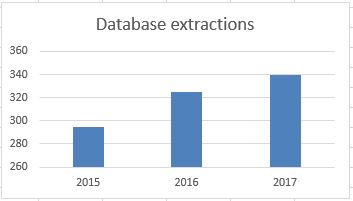 |
|
 |
|
| For any question on data and metadata, please contact: Eurostat user support |
|
|||
| 1.1. Contact organisation | Swedish Board of Agriculture |
||
| 1.2. Contact organisation unit | Statistics Division |
||
| 1.5. Contact mail address | Jordbruksverket SE- 551 82 JÖNKÖPING |
||
|
|||||||||||||||||||||||||||
| 2.1. Data description | |||||||||||||||||||||||||||
Main characteristics
|
|||||||||||||||||||||||||||
| 2.2. Classification system | |||||||||||||||||||||||||||
The EAA is an integral part of the European system of accounts and therefore for their compilation the Eurostat's general classification of economic activities, NACE Rev. 2, is used. |
|||||||||||||||||||||||||||
| 2.3. Coverage - sector | |||||||||||||||||||||||||||
EAA cover the Agricultural sector. |
|||||||||||||||||||||||||||
| 2.4. Statistical concepts and definitions | |||||||||||||||||||||||||||
One of the principal objectives of the EAA is to measure agricultural income and changes therein. |
|||||||||||||||||||||||||||
| 2.5. Statistical unit | |||||||||||||||||||||||||||
In order to analyse flows generated by the production process and the use of goods and services, it is necessary to select units which emphasise relationships of a technico-economic kind. This requirement means that as a rule institutional units must be partitioned into smaller and more homogeneous units with regard to the kind of production. Local kind-of-activity units (local KAUs) are intended to meet this requirement as a first but practically-oriented operational approach |
|||||||||||||||||||||||||||
| 2.6. Statistical population | |||||||||||||||||||||||||||
The agricultural holding, which is the unit currently used for statistical studies of agriculture (censuses, surveys of the structure of agricultural holdings), is the local KAU most appropriate to the agricultural industry.In addition to agricultural holdings, the agricultural industry comprises units made up of groups of producers (e.g. cooperatives) which produce wine and olive oil and specialised units which provide machines, material and labour for the performance of contract work. |
|||||||||||||||||||||||||||
| 2.7. Reference area | |||||||||||||||||||||||||||
|
|||||||||||||||||||||||||||
| 2.8. Coverage - Time | |||||||||||||||||||||||||||
1990-2017 |
|||||||||||||||||||||||||||
| 2.9. Base period | |||||||||||||||||||||||||||
Base year 2010 |
|||||||||||||||||||||||||||
|
||||||||||||||||||||||||||||||||||||||||||||||||||||||||||||||||||||||||||||||||||||||||||||||||||||||||||||||||||||||||||||||
| 3.1. Source data | ||||||||||||||||||||||||||||||||||||||||||||||||||||||||||||||||||||||||||||||||||||||||||||||||||||||||||||||||||||||||||||||
Overall summary
|
||||||||||||||||||||||||||||||||||||||||||||||||||||||||||||||||||||||||||||||||||||||||||||||||||||||||||||||||||||||||||||||
| 3.2. Frequency of data collection | ||||||||||||||||||||||||||||||||||||||||||||||||||||||||||||||||||||||||||||||||||||||||||||||||||||||||||||||||||||||||||||||
Annual |
||||||||||||||||||||||||||||||||||||||||||||||||||||||||||||||||||||||||||||||||||||||||||||||||||||||||||||||||||||||||||||||
| 3.3. Data collection | ||||||||||||||||||||||||||||||||||||||||||||||||||||||||||||||||||||||||||||||||||||||||||||||||||||||||||||||||||||||||||||||
Census
|
||||||||||||||||||||||||||||||||||||||||||||||||||||||||||||||||||||||||||||||||||||||||||||||||||||||||||||||||||||||||||||||
| 3.4. Data validation | ||||||||||||||||||||||||||||||||||||||||||||||||||||||||||||||||||||||||||||||||||||||||||||||||||||||||||||||||||||||||||||||
|
||||||||||||||||||||||||||||||||||||||||||||||||||||||||||||||||||||||||||||||||||||||||||||||||||||||||||||||||||||||||||||||
| 3.5. Data compilation | ||||||||||||||||||||||||||||||||||||||||||||||||||||||||||||||||||||||||||||||||||||||||||||||||||||||||||||||||||||||||||||||
|
||||||||||||||||||||||||||||||||||||||||||||||||||||||||||||||||||||||||||||||||||||||||||||||||||||||||||||||||||||||||||||||
| 3.6. Adjustment | ||||||||||||||||||||||||||||||||||||||||||||||||||||||||||||||||||||||||||||||||||||||||||||||||||||||||||||||||||||||||||||||
- |
||||||||||||||||||||||||||||||||||||||||||||||||||||||||||||||||||||||||||||||||||||||||||||||||||||||||||||||||||||||||||||||
|
||||||||||||||
| 4.1. Quality assurance | ||||||||||||||
|
||||||||||||||
| 4.2. Quality management - assessment | ||||||||||||||
Development since the last quality report
|
||||||||||||||
|
||||||||||
| 5.1. Relevance - User Needs | ||||||||||
|
||||||||||
| 5.2. Relevance - User Satisfaction | ||||||||||
|
||||||||||
| 5.3. Completeness | ||||||||||
|
||||||||||
|
||||||||||
| 6.1. Accuracy - overall | ||||||||||
|
||||||||||
| 6.2. Sampling error | ||||||||||
| 6.2.1. Sampling error - indicators | ||||||||||
| 6.3. Non-sampling error | ||||||||||
| 6.3.1. Coverage error | ||||||||||
| 6.3.1.1. Over-coverage - rate | ||||||||||
| 6.3.1.2. Common units - proportion | ||||||||||
| 6.3.2. Measurement error | ||||||||||
| 6.3.3. Non response error | ||||||||||
| 6.3.3.1. Unit non-response - rate | ||||||||||
| 6.3.3.2. Item non-response - rate | ||||||||||
| 6.3.4. Processing error | ||||||||||
| 6.3.4.1. Imputation - rate | ||||||||||
| 6.3.5. Model assumption error | ||||||||||
| 6.4. Seasonal adjustment | ||||||||||
| 6.5. Data revision - policy | ||||||||||
Two cases: 1. In cases when incorrect data has been published: According to our statistical process (described in section 4.1.2) there is a process established for this. A form should be filled in where the problem is described and the incorrectness should be graded according to its severity. Based on this, decisions are taken on how to deal with revisions/corrections. 2. Specifically for EAA the policy for revisions, in practise, is described in section 6.6.1 |
||||||||||
| 6.6. Data revision - practice | ||||||||||
|
||||||||||
|
||||||||
| 7.1. Timeliness | ||||||||
|
||||||||
| 7.2. Punctuality | ||||||||
|
||||||||
|
||||||||||||||||||||||||||||||||||||||||||||||||||||||||||||||||||
| 8.1. Comparability - geographical | ||||||||||||||||||||||||||||||||||||||||||||||||||||||||||||||||||
To be assessed by Eurostat |
||||||||||||||||||||||||||||||||||||||||||||||||||||||||||||||||||
| 8.1.1. Asymmetry for mirror flow statistics - coefficient | ||||||||||||||||||||||||||||||||||||||||||||||||||||||||||||||||||
| 8.2. Comparability - over time | ||||||||||||||||||||||||||||||||||||||||||||||||||||||||||||||||||
|
||||||||||||||||||||||||||||||||||||||||||||||||||||||||||||||||||
| 8.3. Coherence - cross domain | ||||||||||||||||||||||||||||||||||||||||||||||||||||||||||||||||||
|
||||||||||||||||||||||||||||||||||||||||||||||||||||||||||||||||||
| 8.4. Coherence - sub annual and annual statistics | ||||||||||||||||||||||||||||||||||||||||||||||||||||||||||||||||||
| 8.5. Coherence - National Accounts | ||||||||||||||||||||||||||||||||||||||||||||||||||||||||||||||||||
Use of EAA-data in NA calculations
|
||||||||||||||||||||||||||||||||||||||||||||||||||||||||||||||||||
| 8.6. Coherence - internal | ||||||||||||||||||||||||||||||||||||||||||||||||||||||||||||||||||
The data is consistent. |
||||||||||||||||||||||||||||||||||||||||||||||||||||||||||||||||||
|
||||||||||||
| 9.1. Dissemination format - News release | ||||||||||||
|
||||||||||||
| 9.2. Dissemination format - Publications | ||||||||||||
|
||||||||||||
| 9.3. Dissemination format - online database | ||||||||||||
|
||||||||||||
| 9.4. Dissemination format - microdata access | ||||||||||||
|
||||||||||||
| 9.5. Dissemination format - other | ||||||||||||
In addition to the dissemination on the webbsite of the Swedish Board of Agriculture (html, pdf and on-line database), the publications are also disseminated at the website of Statistics Sweden (only in pdf) The data is transmitted to Statistics Sweden for use in National Accounts. The data is also transmitted to Eurostat according to EAA regulation. |
||||||||||||
| 9.6. Documentation on methodology | ||||||||||||
|
||||||||||||
| 9.7. Quality management - documentation | ||||||||||||
|
||||||||||||
|
||||||||
|
||||||||
|
|||
| 11.1. Confidentiality - policy | |||
| Restricted from publication | |||
| 11.2. Confidentiality - data treatment | |||
| Restricted from publication | |||
|
|||
|
|||
|
|||
| The 2017 horticultural census questionnaire Machinery and equipment questionnaire Metadata for data sources |
|||
